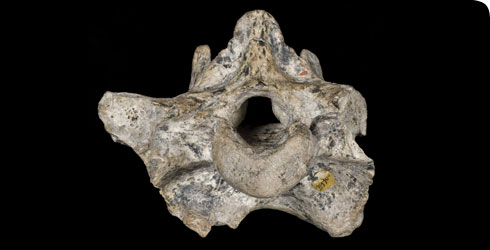Biology
Body size
No complete skeleton of Varanus prisca has ever been discovered, so estimating its body length and weight has proved difficult. Some scientists have claimed lengths of up to 8 metres, but this has been disputed and maximum body lengths of 4.5 metres have also been proposed.
Similarly, weight estimates vary from 100–2000 kg. More complete skeletons will be needed to arrive at a more accurate figure.
Nevertheless, Varanus prisca would still represent the largest of all land-living lizards. The only larger lizards would have been the extinct marine mosasaurs, which lived in the oceans during the Cretaceous Period around 90 to 65 million years ago.
Trophic strategy
The curved, sharply serrated teeth show that this gigantic lizard was a carnivore.
It was probably one of the top predators in Pleistocene Australia and may have preyed on a variety of marsupial mammals, as well as ground birds and reptiles.
Komodo dragons have a venomous bite and it is tempting to speculate that Varanus prisca shared this adaptation.
